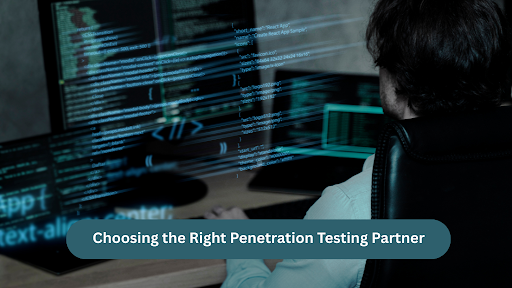Business
A Comprehensive Guide to Choosing the Right Penetration Testing Services for Your Organization
Published
4 days agoon
By
Prime Star
For many organizations, choosing penetration testing services is a daunting task. Because of the sea of sameness, every vendor looks polished, every pitch sounds convincing, and their reports seem impressive. But under the hood? Some of those services are clearly not helpful, credible, or capable of adding real value.
It happens all the time — companies invest heavily and receive thick, glossy reports. And what happens months later? They’re blindsided by cyberattacks. The problem isn’t the absence of testing. It’s the absence of real testing. What such service providers offer is box-checking, not intelligence.
The truth is simple: organizations don’t need another generic report — they need actionable guidance that strengthens their security posture. That’s the difference between good, valuable pen testing and a penetration testing service that truly adds value.
The Red Flags Leaders Should Watch Out For
Spotting weak vendors isn’t too hard when leaders know what to look for. A few warning signs include:
- Cookie-cutter reports – If the deliverable looks like a copy-paste template with the company name swapped in, that’s a bad sign. It shows a lack of real effort.
- Surface-level findings – Reports loaded with trivial issues like “password policy” notes but empty of privilege escalation or lateral movement analysis are a giveaway.
- Poor communication – If testers can’t explain findings in plain terms or resist questions, they’re not true partners. Certified and professional pentesters love discussing your pain points and explaining risks.
- Speed over depth – Projects completed far too quickly for the size of the environment often signal automated scans dressed up as penetration testing services.
Questions That Reveal True Expertise
When evaluating a vendor, leaders should go beyond the sales pitch and dig into how testers think. Smart questions include:
- Can you walk me through your methodology?
Skilled pentesters will detail reconnaissance, exploitation, post-exploitation and reporting. Weak ones will stick to vague mentions of tools and “standards.” - What happens if you don’t find anything?
Experts will acknowledge there’s always something—whether a critical flaw, a misconfiguration or a process gap. Pretenders may claim “perfect security,” which doesn’t exist. - Do you simulate real-world attack chains?
Since attackers chain weaknesses together, real testers should explain how they mimic that behaviour. Without it, the exercise is just theatre. - Can we speak with the actual testers?
Direct access to the people doing the work is non-negotiable. If it’s denied, that’s a red flag.
How to Judge Technical Depth and Expertise
Sophisticated tools mean nothing without sharp minds behind them. To evaluate penetration testing services, leaders should look for:
- Detailed findings – Strong reports explain how vulnerabilities were exploited, not just list them.
- Proof of exploitation – Screenshots, logs or real demonstrations provide evidence.
- Contextual risk analysis – The best vendors explain business impact, e.g., whether a SQL injection could leak an entire customer database.
- Remediation guidance – Good pen testing reports offer prioritized fixes, compensating controls and support for IT teams.
A Tangent Worth Noting
Many executives feel this vetting process sounds like extra homework. And in a way, it is. But consider it like hiring a surgeon. No one chooses the cheapest option or the one with the fancy brochure. They choose the surgeon who has performed the procedure countless times and can calmly explain contingency plans. It’s the same with security.
What Real Value Looks Like
The right vendor leaves a company with clarity, not confusion. Signs of real value include:
- Delivery of a roadmap of prioritized actions, not just a PDF.
- IT teams that truly understand the “why” behind recommendations.
- Broad coverage of attack surfaces—networks, cloud, web apps, APIs.
- A clear sense that attackers would struggle after fixes are implemented.
If none of this is present, then the vendor isn’t the right partner.
Why CyberNX is the Best Penetration Testing Services Partner?
CyberNX stands out as a trusted partner because it delivers penetration testing services along with confidence. Their approach combines deep technical expertise with a hands-on, attacker’s mindset. Every engagement is led by certified professionals (OSCP, CEH, CISSP) who know how to uncover vulnerabilities. They are also capable of picking subtle misconfigurations and chained attack paths that others often miss.
What makes CyberNX different is its balance of thorough technical depth and clear communication. Findings are presented with context, proof-of-concept and prioritized remediation guidance that security teams can act on immediately.
With CERT-In empanelment and recognition from the Government of India, CyberNX assures compliance alongside actionable intelligence.
From financial institutions to e-commerce platforms, CyberNX supports diverse industries with tailored penetration testing services. Consequently, they strengthen resilience, reduce risks and keep businesses a step ahead of attackers.
Conclusion
Choosing the right penetration testing services isn’t about flashy marketing or polished reports. It’s about who digs deeper, thinks like an attacker and makes an organization just uncomfortable enough to see its blind spots—before adversaries do.
The best vendors like CyberNX don’t just provide a document. They provide peace of mind. And that is exactly what every CTO, CISO or IT leader is ultimately looking for.
FAQs
How often should an organization invest in penetration testing services?
Most experts recommend at least once a year, but high-risk industries or businesses that frequently update applications should consider testing quarterly or after major system changes.
Is there a difference between penetration testing services and vulnerability scanning?
Yes. Vulnerability scanning uses automated tools to identify known flaws, while penetration testing simulates real-world attacks to validate risks, exploit weaknesses, and provide remediation strategies.
What industries benefit most from penetration testing services?
While every industry gain value, sectors like finance, healthcare, e-commerce, and SaaS platforms benefit the most due to sensitive data handling, strict compliance, and constant threat exposure.
Can penetration testing services help with regulatory compliance?
Absolutely. Pen testing often supports frameworks like PCI DSS, HIPAA, and ISO 27001 by providing evidence of proactive security measures and risk management practices.

When Is It Time to Replace Your HVAC System Instead of Repairing It?

Everything You Need to Know About Identity and Access Management

Will AI Ad Generators Make Human Copywriters Obsolete?

Andre Hakkak Net Worth 2025: Biography, Luxury House, Wife, and Life Today

Who Was Frances Yarborough? The Truth About Don Knotts’ Last Wife

Choosing the Right Furniture Delivery Software in 2026

Adapting to Brexit and Currency Changes: How UK Amazon Sellers Can Stay Competitive

Serrapeptase Liver Connection: Improve Your Liver Function Naturally

How Your Dating Perceptions Change As You Get Older

Roof Replacement and Repair Experts Proudly Serving the Heart of Texas Communities

Curious About JOI Database? Read This First Before You Click Anything

Should You Use Wooflix in 2025? Honest Review and Best Alternatives

Where Is Noelle Watters Now? Jesse Watters’ Ex-Wife’s Life After Divorce

Jacqueline Bernice Mitchell: The Inspiring Story of Jerry Rice’s Ex-Wife

ECMISS: The Intelligent System Behind Smarter Everything

Who Is Marlene Knaus? The Untold Story of Niki Lauda’s First Wife

Is F2Movies Safe to Use? The Truth Nobody Tells You

Alisande Ullman Today: What Happened After Her Divorce from Leslie Nielsen?

Who Is Raquel Pedraza? Meet Taylor Fritz’s Tennis Star Ex-Wife

Where Is Anne Steves Now? The Truth About Rick Steves’ Ex-Wife

When Is It Time to Replace Your HVAC System Instead of Repairing It?

Everything You Need to Know About Identity and Access Management

Will AI Ad Generators Make Human Copywriters Obsolete?

Andre Hakkak Net Worth 2025: Biography, Luxury House, Wife, and Life Today

Who Was Frances Yarborough? The Truth About Don Knotts’ Last Wife

Choosing the Right Furniture Delivery Software in 2026

Adapting to Brexit and Currency Changes: How UK Amazon Sellers Can Stay Competitive

Serrapeptase Liver Connection: Improve Your Liver Function Naturally

How Your Dating Perceptions Change As You Get Older

Roof Replacement and Repair Experts Proudly Serving the Heart of Texas Communities
Categories
Trending
-

 Entertainment3 months ago
Entertainment3 months agoCurious About JOI Database? Read This First Before You Click Anything
-

 Entertainment3 months ago
Entertainment3 months agoShould You Use Wooflix in 2025? Honest Review and Best Alternatives
-

 Celebrity2 months ago
Celebrity2 months agoWhere Is Noelle Watters Now? Jesse Watters’ Ex-Wife’s Life After Divorce
-

 Celebrity1 month ago
Celebrity1 month agoJacqueline Bernice Mitchell: The Inspiring Story of Jerry Rice’s Ex-Wife
